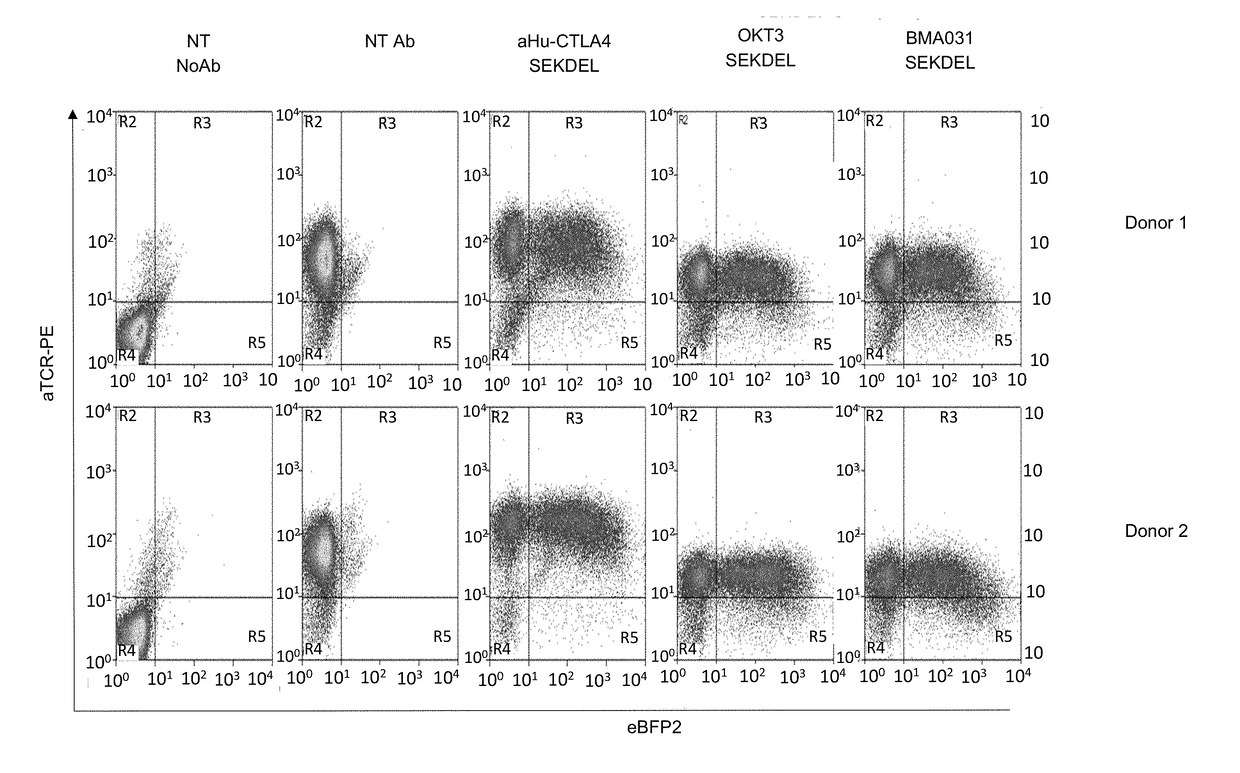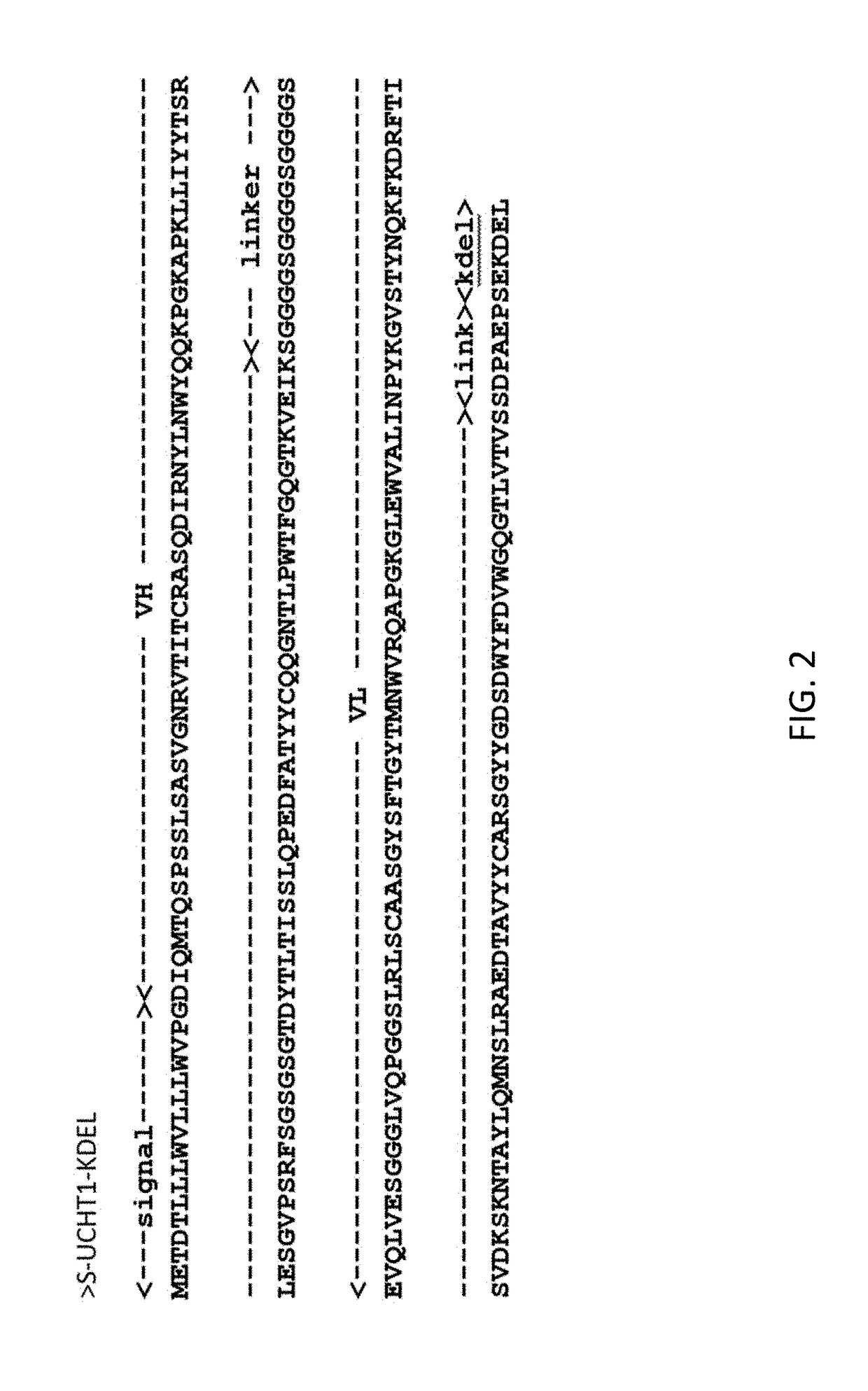Protein-based t-cell receptor knockdown
a t-cell receptor and protein technology, applied in the field of protein-based t-cell receptor knockdown, can solve the problems of insufficient time to generate an autologous, difficult or impossible to generate a product from patient's own lymphocytes, and high manufacturing costs, and achieve the effect of t-cells causing gvhd following
- Summary
- Abstract
- Description
- Claims
- Application Information
AI Technical Summary
Problems solved by technology
Method used
Image
Examples
example 1
Knockdown of the TCR / CD3 Complex
[0135]ScFvs were cloned into a retroviral transfer vector in frame at their amino-terminus with a signal peptide and with the SEKDEL (SEQ ID NO:20) motif at their carboxy terminus. An internal ribosomal entry sequence (IRES) was cloned after the scFv-SEKDEL. A fluorescent protein was cloned after the IRES. 293T cells were transfected with the transfer vectors along with an expression plasmid coding for the RD114 envelope and a further expression plasmid which supplies gamma-retroviral gagpol. After 48 and 72 hours, supernatant was harvested. T-cell lines were transduced by exposing the T-cells to the supernatant in the presence of retronectin. Primary human T-cells were transduced in a similar manner but were stimulated with anti-CD3 and anti-CD28 and IL2 beforehand. To determine TCR surface expression, T-cells were stained with fluorescent monoclonal antibodies which recognize CD3 / TCR, washed and analysed by flow-cytometry.
[0136]In initial experiment...
PUM
| Property | Measurement | Unit |
|---|---|---|
| nucleic acid sequence | aaaaa | aaaaa |
| time | aaaaa | aaaaa |
| structure | aaaaa | aaaaa |
Abstract
Description
Claims
Application Information
 Login to view more
Login to view more - R&D Engineer
- R&D Manager
- IP Professional
- Industry Leading Data Capabilities
- Powerful AI technology
- Patent DNA Extraction
Browse by: Latest US Patents, China's latest patents, Technical Efficacy Thesaurus, Application Domain, Technology Topic.
© 2024 PatSnap. All rights reserved.Legal|Privacy policy|Modern Slavery Act Transparency Statement|Sitemap



